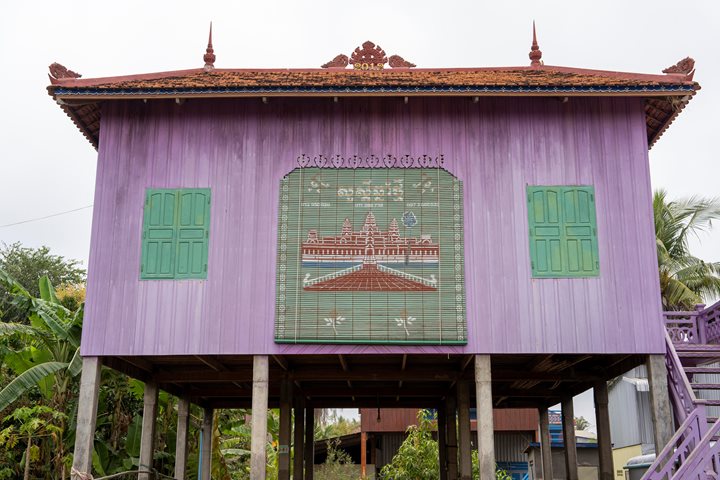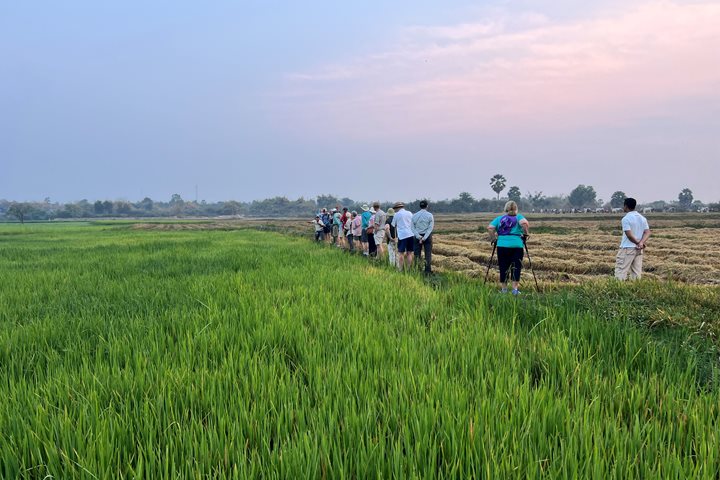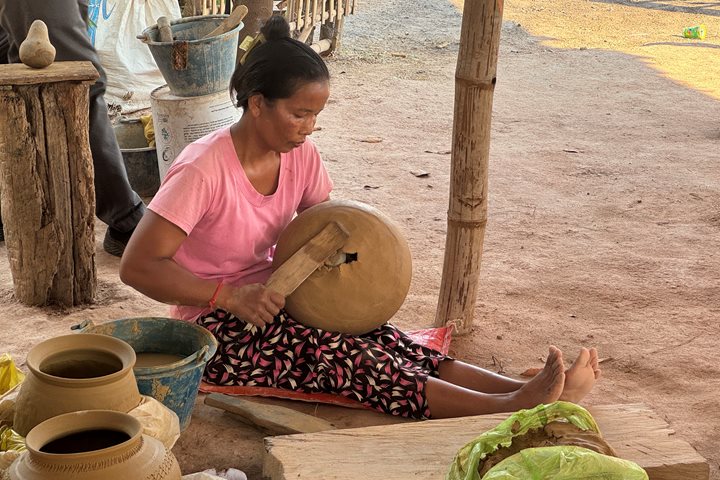At breakfast time, the Jahan has lifted anchor and moves downriver to dock near Wat Phnom, the hill from which the city takes its name. Stating that today is a day of contrasts would be an understatement. It will be a full day with many moving experiences from the beauty of the Royal Palace and exquisite ancient Khmer to experiencing the darkness of the Killing Fields. At the dock, cyclos are waiting to take us on an exhilarating tour of Phnom Penh. From the striking colonial building of the Post Office, around the hill of Wat Phnom, past the U.S. Embassy compound and around the Central Market, our cyclo drivers are weaving in and out of the morning traffic towards the road along the river, which brings us to our final destination: the large open square in front of the Royal Palace.
We visit some of the public spaces, but it is in the private compound where King Sihamoni resides. The walls of the enclosure of the Silver Pagoda tell stories from the Ramayana epic in one long painting, which is currently under restoration, financially supported by a Polish organization. One of the royal stupa of Princess Kantha Bhopa, was the centre of a very important ceremony last July, when the ashes of her father, former King Sihanouk, were placed inside. The visit to the French-built National Museum brings us back to the Angkorian period with its fabulous collection of Khmer art, in both bronze and sandstone. To our surprise, various 10th century sculptures, which recently were repatriated from well-known U.S. collections as well as Sotheby’s and Christie’s, are on display, recreating their original grouping before they were looted in the 70s and early 80s.
After lunch at the VIP Topaz Restaurant, we were confronted with one of the harsh realities of the Khmer Rouge period of terror from April 1975 till January 1979. At Tuol Sleng, a former high school compound used as interrogation and torture centre, two survivors, a mechanic and a painter, bear witness to the thousands who were killed.
A presentation about the work of a charity called Tabitha provides a messages of hope. Tabitha, which was organized 20 years ago by Canadian Janne Ritskes, has been highly successful through a simple savings program to create a basic living standard, dignity, and independence. Over 250 families in Takeo province provide the woven silk, used to create the various beautiful items, which are sold in their store. We are briefed about the major current project of building a hospital for women, scheduled to open in 2016.
Back on the Jahan, we enjoyed a delicious BBQ buffet on deck followed by a dance performance of members of the Children of Bassac dance troupe accompanied by a small orchestra and female singer. The Blessing and Golden Mermaid dance are examples the serene and posed classical ballet, while the coconut and clown dance are lively and noisy folk dances.
Time for a night stroll or rest to reflect on the full range of experiences in Phnom Penh. Tomorrow, there is still time for an early walk before we set sail towards the Vietnam border.







